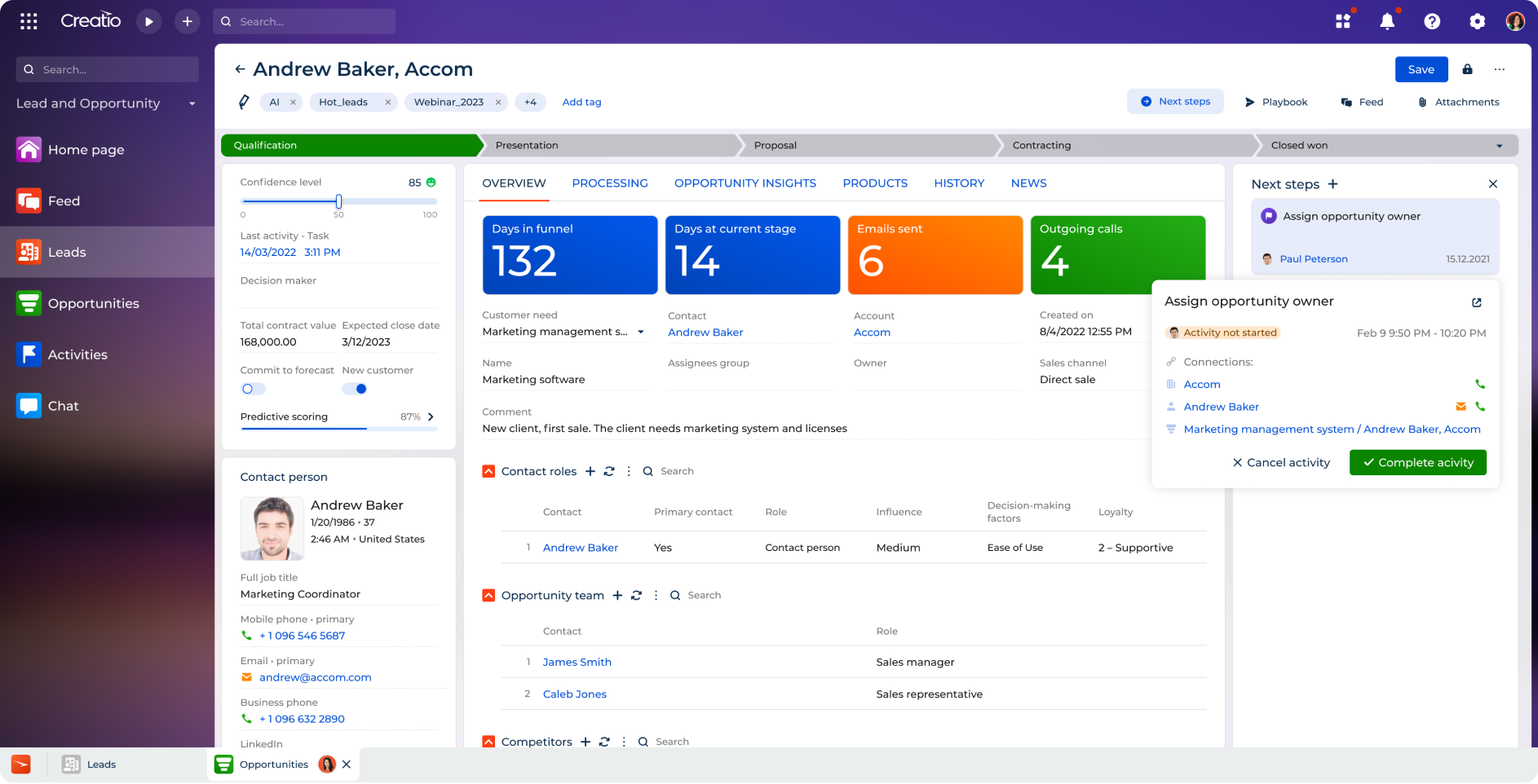
Creatio: Complete Buyer's Guide
AI-native CRM platform that unifies marketing, sales, and service operations with no-code customization for mid-market organizations.
Creatio positions itself as an AI-native customer relationship management platform designed to unify marketing, sales, and service operations through embedded artificial intelligence capabilities. The vendor targets organizations seeking to eliminate fragmented customer data across departments while providing no-code AI customization capabilities that marketing teams can deploy without IT dependencies[41][43][54].
Market Position & Maturity
Market Standing
Creatio occupies a strategic mid-market position between enterprise platforms (Salesforce, Microsoft) and SMB-focused solutions (HubSpot, Pipedrive), targeting organizations with sufficient resources for complex implementation but seeking alternatives to enterprise-level cost structures[43][54][57].
Company Maturity
Company maturity indicators suggest established market presence with documented enterprise implementations across telecommunications and financial services sectors[53][54].
Proof of Capabilities
Quantified Outcomes
Documented performance evidence shows Creatio's generative AI capabilities delivering 200+ content variations per hour, significantly outperforming HubSpot's 80 variations hourly ceiling in head-to-head capability comparisons[45][46][53][58]. Financial services marketers implementing Creatio's AI content generation report 30% faster campaign deployment cycles, demonstrating measurable productivity improvements in real-world implementations[53][54].
AI Technology
Creatio's AI functionality spans three core areas: predictive analytics for lead qualification, generative AI for content automation, and agentic AI for autonomous customer interactions. The platform's technical foundation centers on unified AI architecture that synchronizes engagement data across marketing-sales-service functions, addressing departmental data silos through native integration rather than third-party modules[41][43][54].
Architecture
Competitive Advantages
Creatio provides superior BPMN process automation capabilities and generates significantly more content variations (200+ hourly versus HubSpot's 80), though HubSpot offers more accessible user experience for marketing teams with limited technical resources[43][53][58].
Market Positioning
Creatio occupies the mid-market space between enterprise platforms and SMB-focused solutions, targeting organizations with sufficient resources for complex implementation but seeking alternatives to enterprise-level cost structures[43][54][57].
Key Features

Pros & Cons
Use Cases
Pricing
Featured In Articles
How We Researched This Guide
About This Guide: This comprehensive analysis is based on extensive competitive intelligence and real-world implementation data from leading AI vendors. StayModern updates this guide quarterly to reflect market developments and vendor performance changes.
60+ verified sources per analysis including official documentation, customer reviews, analyst reports, and industry publications.
- • Vendor documentation & whitepapers
- • Customer testimonials & case studies
- • Third-party analyst assessments
- • Industry benchmarking reports
Standardized assessment framework across 8 key dimensions for objective comparison.
- • Technology capabilities & architecture
- • Market position & customer evidence
- • Implementation experience & support
- • Pricing value & competitive position
Research is refreshed every 90 days to capture market changes and new vendor capabilities.
- • New product releases & features
- • Market positioning changes
- • Customer feedback integration
- • Competitive landscape shifts
Every claim is source-linked with direct citations to original materials for verification.
- • Clickable citation links
- • Original source attribution
- • Date stamps for currency
- • Quality score validation
Analysis follows systematic research protocols with consistent evaluation frameworks.
- • Standardized assessment criteria
- • Multi-source verification process
- • Consistent evaluation methodology
- • Quality assurance protocols
Buyer-focused analysis with transparent methodology and factual accuracy commitment.
- • Objective comparative analysis
- • Transparent research methodology
- • Factual accuracy commitment
- • Continuous quality improvement
Quality Commitment: If you find any inaccuracies in our analysis on this page, please contact us at research@staymodern.ai. We're committed to maintaining the highest standards of research integrity and will investigate and correct any issues promptly.